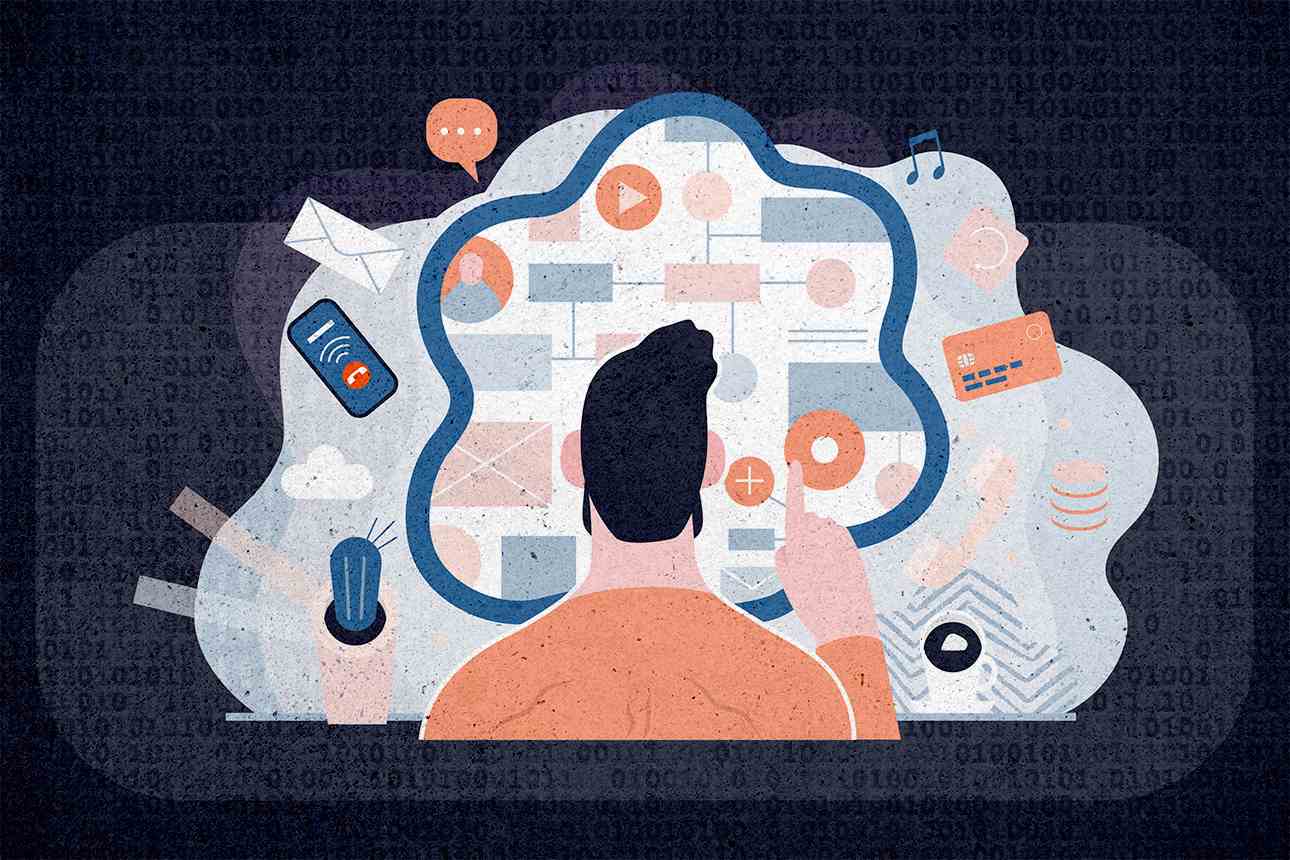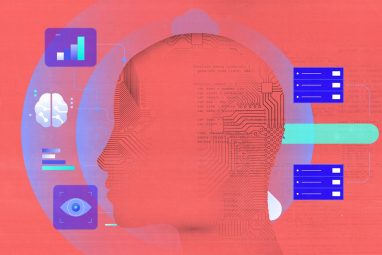How Data Is Humanizing Customer Experiences
Data-driven personalization is coming to businesses across all industries, not just tech giants.
Topics
News
- Ooredoo Launches Sovereign AI Cloud in Qatar Powered by Nvidia GPUs
- Dubai Future Foundation and WEF Release Top 10 Emerging Technologies of 2025
- Deloitte and AWS Forge $1 Billion Alliance to Accelerate Digital Transformation in the Middle East
- Over 40% of Agentic AI Projects Expected to Fail by 2027, Report Finds
- Guardian AI Agents Poised to Take 15% of Agentic AI Market by 2030, Gartner Says
- Deloitte Rolls Out Global Agentic Network to Accelerate AI Adoption in the Middle East

For most of us, the way we live our day-to-day lives has changed substantially since the beginning of the pandemic, with many of those changes now permanent. This shift has introduced opportunities and some challenges for businesses of all shapes and sizes.
It’s not just Zoom and Netflix that are seeing the transformative effects. A recent study found that property and casualty insurance customers now have much higher expectations for their insurers’ websites and mobile apps. Similarly, mainstream adoption of telehealth has continued to surge, growing by 36% in 2021 as health care consumers adopted it as a more routine option and states expanded insurance coverage for telemedicine. The use of retail banking apps and web apps has skyrocketed, while branch visits have plummeted — even among older generations.
These are not exogenous blips. The behavioral changes that have taken place over the past two years were no doubt accelerated by COVID-19. But now that people have had a chance to reap the benefits of on-demand, digital-first channels for so many of their day-to-day interactions, the conventional wisdom on customer engagement and brand advocacy has changed forever.
How are business leaders finding ways to differentiate themselves amid this explosion of new, digital-first touch points? Increasingly, that answer comes down to using data and analytics in smart ways — to better anticipate consumer needs and to deliver “human” customer experiences at the right time.
The Millisecond Economy
The rise of digital-first client engagement has changed every industry in many ways, but the real root of transformation has come in the form of faster decisions. Every aspect of a transaction needs to be executed instantly, whether determining which special offers will be promoted, making a lending decision, or serving up optimized products. We are now living in a millisecond economy in which consumers expect to be able to execute trades, comparison-shop insurance policies, access important documents, and find a new TV series to binge-watch in an instant. To deliver on these expectations, companies must leverage technology, data and analytics, and cloud solutions to achieve the combination of speed and accuracy necessary to enable these types of experiences.
Take the point-of-sale financing market, for example. The use of “buy now, pay later” (BNPL) solutions, which allow consumers to receive instant, short-term financing on goods purchased online or in stores and make payments in monthly installments, is expected to reach $680 billion in sales worldwide by 2025. The popularity of the format is due largely to how easy it is to use, from the customer perspective. In a recent survey, 56% of BNPL customers said they prefer the service to using a credit card. Among the top reasons, they cited easier payments (45%), increased flexibility (44%), lower interest rates (36%), and easier approval processes (33%) compared with traditional credit card transactions. Behind the scenes, of course, the key functional component making all of those things possible is speed. When executed properly, BNPL solutions allow customers to browse for an item, click a payment option, get approved — in a matter of seconds — and make the purchase.
In order to deliver that seamless, instant gratification, however, a lot needs to happen on the back end. The merchant must connect directly to the lender to orchestrate credit analytics, preapprovals, fraud prevention, and know-your-customer support with loan-servicing functions — including digital payments and collections — invisibly, in fractions of a second.
To do that, the financing institution must be able to instantly process the data necessary to make an on-the-spot decision and funnel that information to the right channels without ever truly taking ownership of the customer relationship. Using just a credit profile combined with powerful analytics, lenders are making it possible for their merchant partners to deliver more personalized, engaged customer experiences.
Expanding the ‘Netflix Effect’
While a seamless experience is important, speed alone does not build lasting customer relationships. To capture both the hearts and minds of customers, digital experiences need to feel personalized, too. This is where the “Netflix effect” comes into play.
For years, Netflix has capitalized on its first-mover advantage in the streaming market while innovating when it comes to digital customer experience. Millions of users are familiar with the streaming company’s ability to recognize a customer’s preferences, automatically pick up where they left off — regardless of location or streaming device — and serve up tailored content.
Historically, achieving that level of data-driven personalization was next to impossible in more complex financial and professional services-oriented interactions. Whether due to a lack of data continuity from one part of the business to the next or an inability to infuse that data into on-the-fly workflow decisions, many companies in industries like finance, insurance, health care, and even retail struggled to achieve that predictive magic in their digital customer interactions. However, in the past two years, massive increases in customer adoption of digital channels and advances in AI-driven analytics have provided the underlying data and analytics horsepower necessary to deliver more personalized digital experiences across different industries.
In the insurance industry, for example, AI and natural language processing technology allow insurers to analyze a customer’s engagement history across emails, documents, and customer service call logs to develop customer-facing self-service tools that are tailored to individual preferences. In practical terms, that means insurance customers looking for policy information, trying to file a claim, or seeking to update their coverage are immediately met with solutions that address their unique needs and take their individual circumstances into account, whether they are on the company website or mobile app, or talking to an agent on the phone. Contrast that with the old-fashioned model of waiting on hold for an agent, having to explain what you need three or four different times, and then receiving a sales pitch for a product you don’t need.
This approach of using data to inform the entire customer engagement cycle is helping to make customer experiences more intuitive and every touch point deeply meaningful. Just as Netflix knows that you might like Ozark because you just watched Breaking Bad, insurers are now able to mine the emails you sent to customer service, your current policy information, and your claims history to serve up solutions that are in sync with your needs.
Differentiating With More Meaningful Touch Points
One concern for companies to consider as more aspects of the customer experience shift to digital channels is the issue of brand homogenization. In a world where every company has the same technological capabilities and every digital interface is starting to look the same, how can brands preserve their unique identities on the internet?
The key for brands operating in this environment is to make sure they are going beyond the basics of digital convenience to create fundamentally better interactions. It’s not about digital for the sake of digital. It’s about predicting customer needs; serving up proactive, personalized solutions; and adding value at each step in the customer journey.
Just as it is in the offline world, where knowledgeable advisers and intuitive salespeople earn trust and win referrals by anticipating customer needs and delivering on their promises, digital experiences must be programmed to do the same, only better. With deep customizations based on AI-driven analyses of real-world customer behaviors, it’s becoming possible to build that predictive intelligence into solutions that deliver hyperpersonalized products and streamlined interactions.
Ironically, it turns out that the key to humanizing digital interactions is data. By mining every touch point; aggregating structured data from customer profiles along with unstructured data from phone and chat logs, emails, and snail mail; and analyzing larger-scale patterns of customer behavior, it’s possible to create a level of personalization that would have been impossible to achieve in the offline world. In order to harness that power, however, companies need to take a close look at whether their current digital strategies support this level of engagement. For those that do, the spoils of the always-on, immediate gratification, millisecond economy await. For those that don’t, the clock is ticking.





